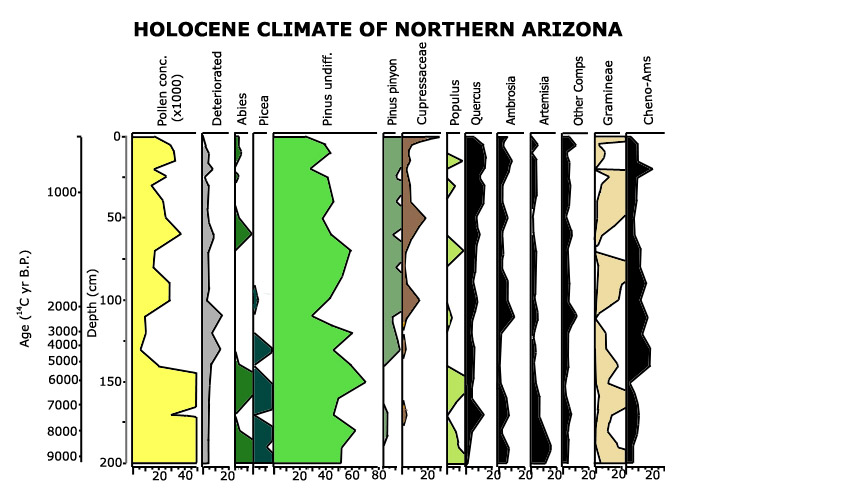|
Section V: Site History
In 1956, Beaver Creek Watershed was established as a US Forest Service Experimental Watershed; in 1976 it was designated a UNESCO Man and the Biosphere Reserve, to function as a center for watershed management research. The USDA Forest Service Rocky Mountain Research Station is one of several agencies and organizations involved in managing Beaver Creek. As a result, the Watershed has extensive "legacy data" on climate, hydrology, fire, land use and management, with 200-plus publications/reports on ecology, wildlife, silviculture, geology, and soils.
Paleoecology Record
The paleoecological
record from Stoneman Lake (Hasbargen 1994) fits well with the Van Devender
et al. (1987) reconstruction that indicates a Pleistocene conifer forest
retreat upslope across the American Southwest, and also coincides well
with inferences from other researchers (Spaulding and Graumlich 1986, Davis
and Sellars 1987, Shafer 1989) that there was a strong summer monsoon pattern
between 10,000 and 8000 yr B.P. Overall, the paleoenvironmental research
conducted in the region implies that a cool, moist early Holocene climate
prevailed until ca. 8000 yr. B.P., with a hot, dry middle Holocene climate
ca. 8000 to 2500 yr B.P. Modern vegetation communities were established
in the Stoneman Lake area by 6000 yr B.P., with little evidence in the
pollen record for even small pockets of mesic habitat along the southern
edge of the Colorado Plateau by 6000 yr B.P. (Hasbargen 1994).
The Stoneman Lake pollen record provides evidence that modern plant communities were well established by the middle Holocene (ca. 6000 yr B.P) and show only minor fluctuations since that time (Hasbargen 1994). Harsbargen (1994) documented an increase of pinyon and juniper pollen ca. 3500 yr B.P., which indicates a regional trend toward pinyon-juniper woodland at the expense of ponderosa pine forest. This research also found that the presence of Alnus pollen, decrease in grass and total pine, along with an increase in oak pollen in the top 25 cm of sediment at Stoneman Lake is probable evidence of logging and grazing coincident with the arrival of European-American settlers into the region.
 |




